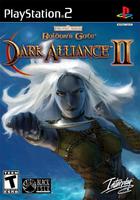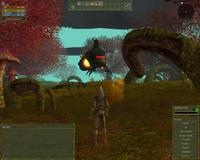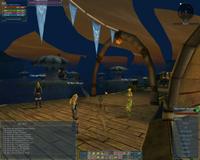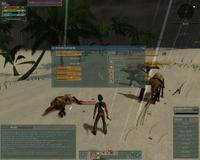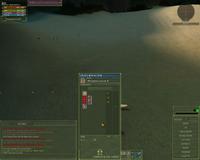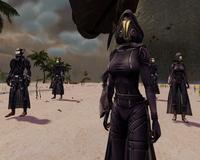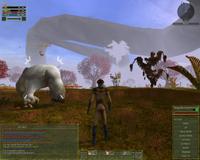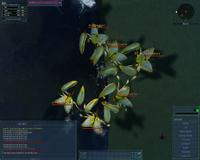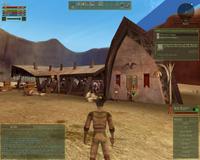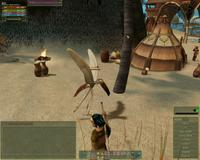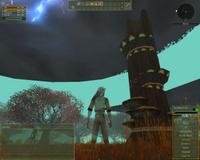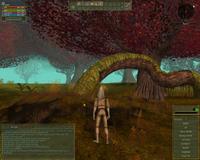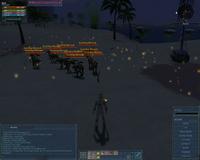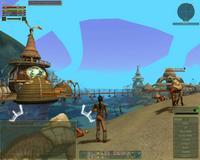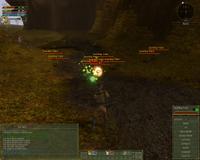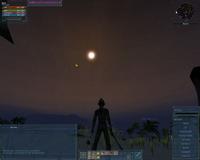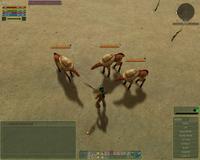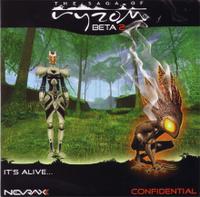|
|
|
Main News Forums Games Games Database Top 100 Release List Support Files Features Reviews Previews Interviews Editorials Diaries Misc Download Gallery Music Screenshots Videos Miscellaneous Staff Members Privacy Statement |
Saga of Ryzom Beta Impressions
To be honest, I've had my head in a Paragon City shaped hole these past few months. I'd seen the ads everywhere for Ryzom, mumbled to myself, "Hey, nice art!" and promptly wandered off to buy some new enhancements. I had no idea what I was jumping into, but found it easy enough to pick up and start playing. Character generation was quick and painless, and had both a ridiculously large number of facial feature modifications and an equally ridiculously small number of actual game-affecting settings. You get three 'action packs' to allocate between the four skill types; the more packs you assign to the same skill, the more actions and better equipment geared toward that skill you start with.
The skill system looks complex due to the sheer number of actions and stat improvements you can buy, but in practice it's quite simple. They call it the Modular Action System, because you can take abilities and effects from different actions you've learned and and combine them into a new, composite action that includes the effects of all the stanzas you've included. Stanzas are what they call ability components; every action you buy is made of them, and learning that action grants you access to all its stanzas for use in action creation. It's as simple as an addition problem; abilities have a cost, and credits are supplied by stanzas that limit the range of the power, or require spending stamina to use the action, or health, or any number of other negative effects. As long as the cost is paid in full by the credits, you can create the action, and if there are more credits than cost, the action's chance to succeed is enhanced.
Skill progression is straightforward: use a skill, gain experience towards it. When you gain a skill level in it, you get 10 points to spend on actions, stat boosts, and stanzas. Eventually it is possible to learn all of them. But why call action components something as non-descriptive as 'stanzas'? One of the biggest obstacles in getting the hang of the game was its spotty documentation and odd choice of words. When the beta first opened, the license agreement that greeted you on startup was in French; that got fixed after about a week. Some of the in-game help and action descriptions were also in French, even up to the end of the beta, and other bits of the help system were either ramblingly incoherent or missing. And what is the benefit of an action that targets certain parts of an enemy's body? The description doesn't say what kind of effect that has; I had pieced together that critical hits had different effects depending where you hit, but it wasn't until they released a revised version of the manual that I found out that enemies actually have weak spots.Thankfully, the revised manual is a great improvement and a more than adequate guide for new players. The user interface is composed of approximately one billion windows, but they all do just one thing and they do it well, and it all works out. All of them can be summoned up or banished away with a keystroke, and you can toggle between four different virtual desktops if you like to keep your window clutter more organized. Left clicking on nearly anything you target will perform a well-labeled default action, and right clicking gives you a full menu of choices. The compass/radar can be configured to point to teammates, landmarks, and mission objectives, and is a wealth of information. My only nitpicks are that the default movement keys are the arrows when WASD would be more convenient, and that the keybinding system has you assigning a function to a key rather than the other way around, which feels backwards but works just fine.
All four of the skills are easy to get the hang of, and even crafting is immediately useful. All equipment degrades in Ryzom, and higher skill levels often require higher quality equipment to be used to their full potential, so most of the time the biggest risk with crafting isn't outright failure but simply reduced quality on the final product. Equipment seems to be so important, in fact, that what you use is often much more important than your skill level. My first time in the game, I took the default action pack, one each of fighting, magic, and prospecting. This starts you off with a dagger. My second character put all three packs into fighting, which nets you a sword. That second character got his first few fighting skill levels in half the time of the first due to quicker kills and less damage taken. Later, I bought a pike and could often one-shot most of the enemies in the newbie lands.
The graphics are incredible, very colorful and clean, with an almost cartoonish feel at times. The landscapes are alien yet familiar, with enormous mushrooms and flowers sprouting from the ground and impossibly huge branches or roots arching over the landscape high in the sky. No orcs or goblins or trolls here, as Nevrax seems to be actively avoiding the old fantasy world standbys; the creatures as well as the scenery have that strangeness built in, with the occasional recognizable beak or claw, but still looking like nothing else ever did. And look they do! Not all creatures are inherently hostile, and when one targets you an eye appears next to its name and life bar. Messabs, for instance, are particularly curious, and have a sixth sense that tells them when you're trying to take screenshots and just where they need to stand to mess them up. It's quite cute the way they walk up to you, and it saves you the trouble of running up to them to attack them. Of course, a predator wandering by may kill it before you get a chance to, assuming it doesn't decide to make a snack of you first.
The entire game is engineered to foster player communities. Crafting is the only way to get decent gear, since NPCs only sell fairly basic equipment, and grouping is by far more efficient than soloing. There are guild-only missions, guild fame ratings, and guildhalls for sale. As for the technical side of things, my experience in the beta was almost bug-free. There was one issue with "kill 'x' number of creatures of type 'y'" missions not keeping track of the number of kills, which was either fixed or only occurred intermittently, a crafting bug that already had a workaround and which I did not experience myself, and a few minor text errors. There was some lag, of course, and a lost connection or two, but no more than for any other online game.
Of course, this is all just the view from the bottom rung of the skill ladder, and the game is just now being officially launched. Just how well the custom action creation system does at high levels couldn't be seen in the brief beta, and how the game world comes together under the exploration and competition of the guilds remains to be seen as well. Their encyclopedia system wasn't even featured in the beta, so the more exploration and discovery-oriented aspects of the game haven't even been seen yet. Ryzom has a lot of potential; Nevrax's continued efforts and player response in the coming months will determine if it will truly be a saga, or just a short story.
Average Reader Ratings: 7.33 (12 votes) |
||||||||||||||||||||||
|
All original content of this site is copyrighted by RPGWatch. Copying or reproducing of any part of this site is strictly prohibited. Taking anything from this site without authorisation will be considered stealing and we'll be forced to visit you and jump on your legs until you give it back. |
||




